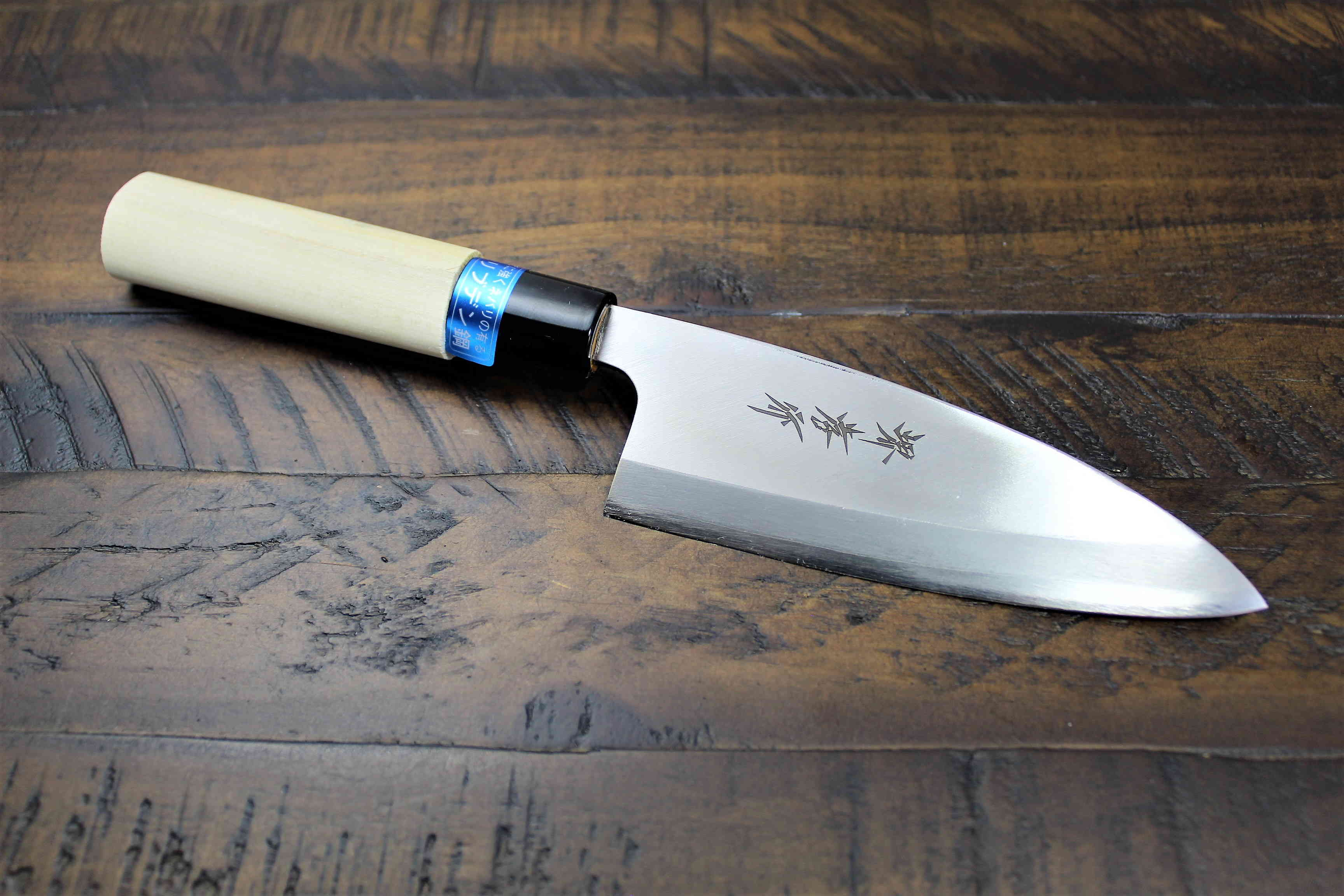
What are Nakiri Knives Used For?
Consider a nakiri knife when adding a new knife to your kitchen collection. Nakiri knives are revered in Japan due to their flexible use, broad, squared blade, and exceptional chopping and cutting capabilities. While shopping for kitchen knives can seem like a simple task, the truth is that you can always use a bit of help when it comes time to buy a Nakiri knife.
Today, we will explore the history of Nakiri knives before examining their various uses. You should be ready to pick up the Nakiri knife of your dreams from the team at Hasu-Seizo by the end of our conversation.
What Are Nakiri Knives Used For?
Nakiri knives are specifically designed for vegetable preparation. The flat blade edge makes complete contact with the cutting board, allowing clean, complete cuts without the need to rock the blade. No matter if you're slicing through eggplant, prepping greens, or chopping onions, the nakiri moves slices with confidence and control.
In Japan, the nakiri has long been favored for household cooking due to its balance, simplicity, and versatility. That same legacy now earns it a place in modern kitchens were precision and consistency matter most.
Nakiri Knife Buying Guide: Choosing the Right Blade for Your Kitchen
If you regularly prep vegetables or want to level up your knife collection, the nakiri brings a perfect mix of function and form. Here's what to keep in mind when shopping for one.
Blade Steel: Stainless Steel vs. High Carbon
A knife’s performance starts with its steel. Nakiri blades typically fall into two categories:
- Stainless Steel: Easier to maintain, less prone to chipping, but dulls faster and needs more frequent sharpening.
- High Carbon Steel: It holds a sharp edge longer and delivers crisper cuts, but requires more care to prevent rust. It’s great if you're serious about knife performance and don't mind drying your blade after every use.
Blade Length: Control Meets Capability
Most nakiri knives range between 5 and 7 inches. This size gives you room to work with larger vegetables while still offering maneuverability for delicate cuts. If you're short on space or want maximum control, go for the shorter end. The longer blade helps for faster prep or bigger produce.
Blade Finish: Smooth or Hammered
Nakiri knives typically feature either a sleek, mirror-polished finish or a hammered (tsuchime) surface. The hammered design helps release food from the blade, speed up prep work, and make the process less tedious. It also adds a distinct visual charm that many cooks appreciate.
Handle Design: Japanese vs. Western Style
The handle affects how the knife feels in your hand. Traditional Japanese handles are typically made of wood and come in octagonal or oval shapes. Western handles are often heavier, more contoured, and bring a full tang for added strength. Try both styles if possible and choose the one that feels most natural.
How to Use a Nakiri Knife in Everyday Cooking
Once you add a nakiri to your lineup, you'll find yourself reaching for it more often than you expected. It handles a wide range of produce with ease:
- Even Slices: The straight edge gives you perfect slices every time. It's especially useful for uniform cuts in recipes that rely on even cooking or presentation.
- Cleaner Cuts: The blade glides smoothly through vegetables, helping to preserve their shape and minimize bruising.
- Fast Chopping and Mincing: Prepping stir-fry ingredients or making salsa? A nakiri moves quickly through piles of veggies with straight, simple cuts.
Thanks to its weight distribution and flat profile, this knife gives you confidence and speed without sacrificing safety.
Experience Authentic Nakiri Knives with Hasu-Seizo
Hasu-Seizo has made it our mission to bring authentic, handcrafted Japanese kitchen knives to cooks who value performance and heritage. Our nakiri knives are forged in Japan by skilled artisans using time-honored techniques. We offer an extensive selection, clear product details, and attentive service. This way, you can find the knife that best suits your cooking style.
With a family in Osaka producing Sakai Takayuki products, the Hasu-Seizo team draws upon our roots and tradition to offer high-quality Nakiri blades at unbeatable prices.
From hammered finishes to rare steels, each of our nakiri knives represents the highest level of craftsmanship. If you're ready to upgrade your kitchen tools and invest in quality that lasts, we’re here to help.
Explore our collection of authentic Japanese nakiri knives to bring a new level of precision to your kitchen.




